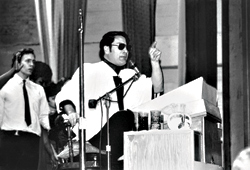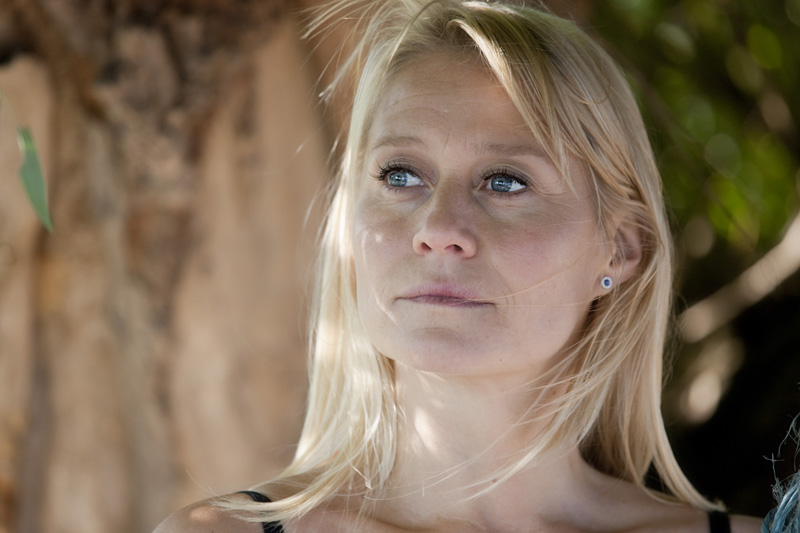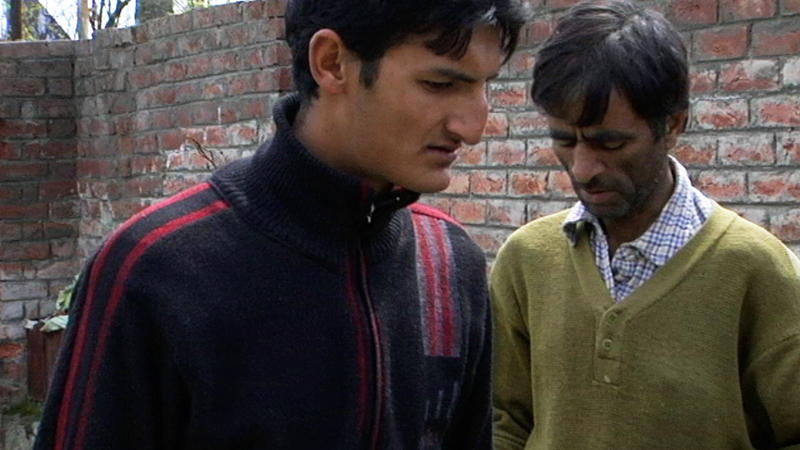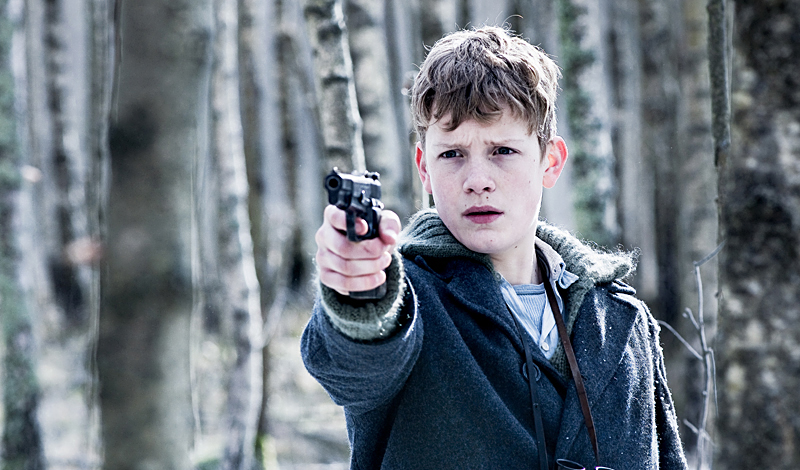In December of 1978, several months after I moved from England to Boston and four short weeks after news broke of the Jonestown massacre, I was traveling with a new beau through Northern California, falling in love not just with him but with San Francisco and the lush wine country around it. It was there that the Peoples Temple, a pseudocommunity based on real need and run off the tracks by crazed demagogue Jim Jones, flowered in all its pathology before a newspaper exposé forced Jones to move the whole outfit to the Guyana jungle for the gruesome denouement in which 909 members died in an apparent mass suicide. I remember wondering how the confluence of natural beauty and physical and emotional violence that defined the catastrophe (and has also defined the best and worst in American cinema) could flourish in America, but not in the West European democracy in which I’d been raised. Sure, we’ve had our loony aspiring cultists, but unlike Jonestown, Waco, and all the other scary dystopias currently nestling in them thar hills, they fizzled at the source.
This excellent documentary by Mac-Arthur fellow Stanley Nelson (The Murder of Emmett Till) offers no grand theories for the Jonestown phenomenon. Aside from a sprinkling of interviews with journalists and the inevitable sociologist, Nelson keeps his head admirably close to the ground in this resolutely noninterpretive oral history of the movement. As well he might, for the testimony of family and former members, coupled with audio and visual tapes shot by temple members and newly declassified CIA photos, tells a remarkable tale of the rise and fall of a toxic utopia that coalesced around an increasingly certifiable leader.
With his sharp suits and Prince Valiant hairdo topping a puppet face shrouded in big sunglasses—he looked like a cardsharp in a surplice—Jim Jones made as unlikely a charismatic leader as any other two-bit cultist before or since. But his own rotten childhood made it easy for him to connect with the disenfranchised souls—an amazing 80 percent of them black and poor, many of them elderly, plus a smattering of derailed college students and other marginal whites—who flocked to hear his rabble-rousing sermons. Jones instinctively understood the need to appeal materially and spiritually to such lost souls, and he shrewdly plundered the structure of the black church to create a succession of communes offering genuine services—a lesson well learned more recently by insurgent Middle Eastern organizations like Hezbollah and Hamas. Meanwhile, he kept his followers so busy and underslept, they had no time to figure out that they were being robbed of both their finances and their psychological independence. Nor could most of them follow up on a growing unease with an increasingly unhinged leader strung out on booze, drugs, and a twisted pansexuality that often culminated in rape.
Yet the theme that keeps recurring in the anguished testimony of former members is that life in the Peoples Temple was also “fun” compared to their dreary former lives outside the temple. It wasn’t just the gospel choirs woven into the fabric of daily life on the road with Jones’ endless proselytizing cross-country bus tours, or in the Northern California town of Ukiah, where they set up a kibbutzlike commune, and finally in the sweltering South American jungle. In the photos and footage of clapping, singing members, you can see an epitaph being written for the brief utopia of the ’60s counterculture. Just as in the impromptu system of social services set in place by Jones, you can see the gaping hole that should have been filled by a social safety net, the absence of which created a vulnerable underclass, some of whose members were credulous enough to place themselves so completely in the hands of a “father” that they could be persuaded to poison first their children and then themselves.
Of all the striking images in this amazing movie, perhaps the most terrible is that of Jones showing off a cooler full of drink, which would shortly be laced with cyanide, to Leo Ryan, the investigating congressman who, hours later, would be shot dead by Jones’ goons. In this country, Kool-Aid can never be just a brand name again. But the larger lesson of Jones-town is that its leader, who billed himself as a socialist, stepped into a breach left by an American antipathy to socialism so profound and generalized, it readied a space for that ideology’s most perverted expression. We heard its echoes in the numerous conspiracy theories that sprang up in the wake of the Jonestown massacre—it was the CIA, it was Soviet agents, it was aliens from outer space. And we still hear it in the paranoid drone of a marginalized far left, and the not-nearly-marginalized-enough far right, of a dangerously polarized AmerJonestownica, a fertile breeding ground for extremity. ELLA TAYLOR








